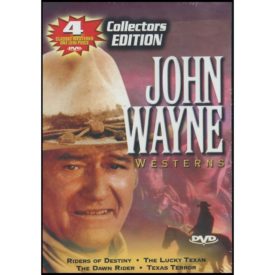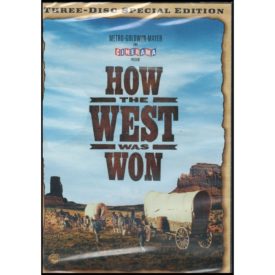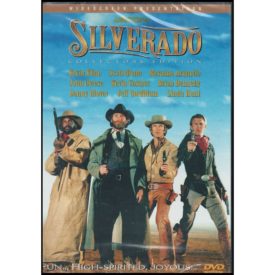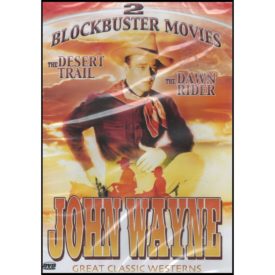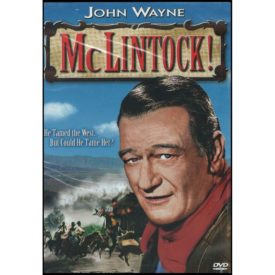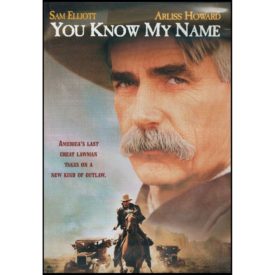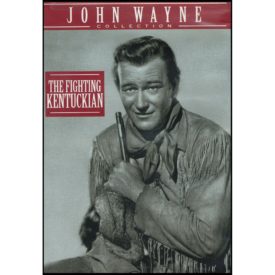Interstellar (DVD)
Other Marketplace Price: $17.99Sale Price:$10.49
- Ships Same Day.
- FREE Shipping (U.S. Delivery).
- International Shipping (See Shipping Chart Below).
Out of stock
| Shipping US FREE SHIPPING |
FREE Shipping! |
|---|---|
| Shipping US Expedited 2-3 Day |
US Shipping: $14.99 Unlimited Items. |
| Shipping Canada |
Canada Shipping: Flat $34.99. |
| Shipping Int'l Standard | International Shipping: $64.99 Worldwide. |
| Shipping Local Pick Up |
FREE Local Pick Up in Store |
| Condition | New |
|---|---|
| Publisher | Paramount |
| Published Date | 2017-01-01 |
| Age Group | Adult |
| Recording Studio | Paramount |
| Format | DVD |
| Brand | Paramount-Sds |
| Amazon ASIN | B01MF78RLG |
| UPC / EAN | 032429257284 |
| Size | 7.5" x 5.25" x .50" |
| Year | 2014 |
| ReleaseDate | 2014-11-07 |
| RuntimeMins | 169 |
| RuntimeStr | 2h 49min |
| Awards | Top rated movie #27 , Won 1 Oscar, 44 wins & 148 nominations total |
| Directors | Christopher Nolan |
| Writers | Jonathan Nolan, Christopher Nolan |
| Stars | Matthew McConaughey, Anne Hathaway, Jessica Chastain |
| Produced by | Kaari Autry, Jenny Basen, Jill Christensen, Stacey Douglas, Stephanie Fraser, Kim Goddard-Rains, Jordan Goldberg, Harrison Goldstein, Árni Björn Helgason, Jake Myers, Christopher Nolan, Lynda Obst, Graeme Puttock, Debbie Schwab, Brock Skretting, Inga Björk Sólnes, Emma Thomas, Gudlaug O. Thorisdottir, Kip Thorne, Thomas Tull |
| Music by | Hans Zimmer |
| Cinematography by | Hoyte Van Hoytema |
| Film Editing by | Lee Smith |
| Casting By | John Papsidera |
| Production Design by | Nathan Crowley |
| Art Direction by | Kendelle Elliott, Eggert Ketilsson, David F. Klassen, Josh Lusby, Agata Maliauka, Eric Sundahl, Dean Wolcott |
| Set Decoration by | Gary Fettis, Helen Kozora |
| Costume Design by | Mary Zophres |
| Makeup Department | Luisa Abel, Patricia Dehaney, Tammy Fox, John Isaacs, Deborah Kliewer, Pearl Louie, Leonard MacDonald, Brian Penikas, Kari Scotton, Jay Wejebe, Kentaro Yano, Jose Zamora, Georgia Allen, Carol F. Doran, Darryl Filion |
| Production Management | Michelle Brattson, Bruce L. Brownstein, Birna Paulina Einarsdottir, Michael Glaser, Casey Grant, David E. Hall, Justin Harrold, Silja Hauksdóttir, Árni Björn Helgason, Eggert Ketilsson, Gary Kosko, Matt Palmer, Jason Pomerantz, Lori Russell, Daniel M. Stillman, Keomanee Vilaythong, Fridrik Ásmundsson, Louis J. Anderson, Tada Chae, Jeff Crandall, Brian Deming, Leo Fialho, Mark Scoon, Ty Warren |
| Second Unit Director or Assistant Director | Darius de Andrade, Valgeir Gunnlaugsson, Gary Hawes, Jason Z. Kemp, Brandon Lambdin, Mackenzie Lawrence, Dillon Neaman, Nilo Otero, Gregory J. Pawlik Jr., Megan M. Shank, Gosha Zuikov |
| Art Department | Craig Abele, Lauren Abiouness, Cheryl Allsen, Laura Bagano, Pierre Bartlette, Jason Bartling, Jay K. Bedore, Andrew Birdzell, Darrel D. Bricker, Elizabeth Brown, Jim Bruder, Steve Burg, Tom Callinicos, Barry Cameron, Charlie Campbell, David B. Clark, Jen Rose Clark, Larry Clark, Gene 'Hap' Cooper, Curtis Corbitt, Duncan Crawford, Jack Crowells, William Daley, Coral Dambrauskas, Nathan Davey, Romek Delmata, James Denton, Jared Ewanchook, Chris Fix, David French, Can Göksoy, Dawna Hammond, Gabriel Hardman, Paul Healy, Craig Henderson, Brent Heyning, Jeff House, Gregory Jein, Olafur Jónasson, Steven Kajorinne, John Kelso, Noelle King, Helen Kozora, Ritchie Kremer, Megan Kumpula, Emily Kwong, Jenne Lee, Phillis Lehmer, Aaron McCullough, Michael Miller, Adam Mull, Greg Musselman, Sonny Nguyen, Jose Alberto Olivas, Dan Ondrejko, Fred M. Ortiz, Bradley Reyes, Nicholas Rymond, Raff Sarabia, Ralph Sarabia, Edward Skade, Paul Sonski, Jeremy Stecker, Craig Stephens, Chauntel Swann, John Thellend, Sally Thornton, Joel Tobman, Jeremy Turley, Brian Walker, Jesse Weber, Mark Weissenfluh, Nathaniel West, Kelly Wills, Ken Wills, Travis Witkowski, Robert Woodruff, Bóas Arnarson, Jeffrey Ault, Ernie Avila, Drew Bakgaard, Chris Ball, Sarena Bhargava, Luke Burton, Jen Rose Clark, Travis Craven, Ivan Drehspul, Dan Engle, Francesco franco Ferrara, Steven Hanks, Matt Hausmann, Chris Hawthorne, Darcy Healy, Bill 'Kauhane' Hoyt, Deborah Jones, Scott G. Jones, Anthony Klaiman, David Ladish, Steven Ladish, Nancy Ann Lai, Alex Lingnau, Kathy Lucas, Jason McDonough, Morgan Mead, Christopher Morente, Adam Mull, Cafe Noir, Andrea Onorato, Edward V. Pannozzo, Emil Petursson, Brett Phillips, Edward J. Protiva, Todd Rex, Leslie Ross, Daniel Scannell, Jefry Shebroe, Darryl Stogre, Eric Sundahl, Anne Tobin, Ely Vegh, Cuitlahuac Morales Velazquez, Michael Vojvoda, John Warner, Lindsay Webb, Kevan Weber, Joseph Wick, Mark Woodworth II, Trevor Woroby, Linda Michelle Zogleman |
| Sound Department | Michael Babcock, Andrew Bock, Scott Curtis, Mark DeSimone, Michael Dressel, Frederic Echelard, John P. Fasal, Christopher Flick, Murray Forward, Aaron Glascock, Matt Gruber, Ken J. Johnson, Richard King, R.J. Kizer, Drew Kunin, Gregg Landaker, Mary Jo Lang, Daniel Lepervanche, Aurélien Mauro, Michael W. Mitchell, Alyson Dee Moore, Ryan Murphy, Matthias Neumann, Thomas J. O'Connell, Jordan O'Neill, Tony Pilkington, Eric Potter, Michael Primmer, David Raymond, Gary A. Rizzo, Kyle Rochlin, John Roesch, Jeff Sawyer, Lyndsey Schenk, Michael Semanick, Jason Stevens, Mark Weingarten, Hugo Weng, Linda Yeaney, Justine Baker, John Baldofsky, Scott Cannizzaro, Evan J Haley, Matthew Iadarola, R.J. Kizer, Philip Menchaca, Carlos Moreno Jr., Randy Torres, Zach Wrobel, Ryan Young, Benedikt Örn Árnason |
| Special Effects by | Ryan Arndt, Francis J. Ayre Jr., Kirk Barton, Todd Bilawchuk, Jeffrey Butterworth, Arthur Clever, Stewart DePass, Don Dolan, Rodney Dolan, John J. Downey, Matthew J. Downey, Ronald Epstein, Scott R. Fisher, Neil Garland, Adam Gelbart, Ronald D. Goldstein, Jón Andri Guðmundsson, Terry Hambleton, R.J. Hohman, Kurt Jackson, Joe Judd, Davíð Geir Jónasson, Gunnar Kvaran, Mike Larrabee, Roland Loew, Darren McCormick, Amanda Paller, Gary Paller, James Paradis, Robin Reilly, Michael Rifkin, Scott Roark, Jim Rollins, Robert L. Slater, Dom Smart, Mark Stanton, Clark Templeman, Mario Vanillo, Brett Annese, Steve Austin, Jon Bethke, Chris Burton, Roy K. Cancino, Michael Clarke, Sam Dean, Eric Durnford, Eric Frazier, Corey Helmer, John Kelso, Louis Lindwall, Jeremy Maupin, Ken Mieding, Jon Thackery, Thorarinn Thordarson, Blumes Tracy, DungVan Vu, Douglas D. Ziegler, John Ziegler, Freyr Ásgeirsson |
| Visual Effects by | Laide Agunbiade, Zohaib Ahsan, Tosin Akinwoye, Johan Alfort, Kris Anderson, Scott R. Anderson, Kanika Andrew, Monifa Andrew, Gerald Ang, Tim Angulo, Yasunobu Arahori, Robin Aristorenas, Oliver Atherton, Nithin Babu, Eric Bachtiar, Alexandre Bain, Kamilla Bak, Michael Jeff Baldemoro, Daniel Baldwin, Thomas Banner, Zeljko Barcan, Adam Barnett, Bruno Baron, Tom Barrett, Linda Barsotti, Jenny Basen, Claudio Bassi, Craig Bates, Jamie Baxter, Dirk Becker, Sebastian Becker, Susanne Becker, Adrian Bell, Katie Bell, Michele Benigna, Rodrigo Bernardo, Otto Betancourt, Scott Beverly, Avinash Bhandary, Udit Bhardwaj, Elham Binsenin, Gerald Blaise, Andrej Blom, Mark Boorer, Jonathan Bot, Tom Bracht, James Braid, Hayley Brazelton, Adam Broderick, Colin P. Brown, Joe DeWalt Brown, Christina Bruce, Patrick Michael Burke, Thomas J. Burton, Atiqah Busairi, Rashabh Butani, Luke Butler, Daniel Caffrey, Ignacio Caicoya, Matt Cameron, Keanan Cantrell, Jon Capleton, Aaron Carey, Michael Cashmore, Elohim Cervantes Tampus, Kamelia Chabane, Caroline Chai, Adeline Chan, Wayne Chan, Josh James Chappell, Benjamin Charles, Abhishek Chaturvedi, Lai Lok Chau, John Abraham Chempil, Jon Chesson, Ricky Cheung, Cheow Hong Chia, Laurence Chong, Caleb Choo, Bun Yue Choy, A.J. Christensen, Andrea Chua, Kenneth Chua, Sim Chuan Xiong, Martin Ciastko, Kirsty Clark, Nicolae-Gheorghe Cojocaru, Tom Collier, Chris Cooper, Ian Copeland, Jean-Nicolas Costa, Christopher Michael Coupe, Jaume Creus, Joshua Cushner, Martin Cutbill, Will Van Dao, Francesca Dare, Jon Datema, Kirsty Davies, Robert John Davies, Fon Davis, Samual Dawes, Sarah de Schot, Iacopo Di Luigi, Sylvan Dieckmann, Rodrigo Dorsch, Miles Drake, Seth Dubieniec, Daniel Duwe, Thomas Døhlen, Bruno Ebe, Chris Eborn, Favian Ee, Marijn Eken, Kevin Elam, Sze Jia Eng, Joe Engelke, Marco Aurélio Engelmann Santos, Wayne England, Jenni Eynon, Jonathan Faber, Gianpietro Fabre, Carl Fairweather, Finella Fan, Péter Farkas, Liam Farnham, Tito Fernandes, David Fernández Girón, Catarina Ferreira, Ricardo Ferreira, Luciana Fintelmam, Adrien Flanquart, Yong Xian Foo, William Foulser, Adam Francis, Paul J. Franklin, Roland Friedrich, Raphaël Gadot, Adam Gailey, Allison Gardner, Nathan Gardner, Chetan Gaur, Pablo Giménez, Walter Goh, Harrison Goldstein, Ana Gomes, Igor González, Rachel Gregson, John Gresko, Andrew Guest, Crystal Hadcroft, Shramana Haldar, Faraz Hameed, Laurent Hamery, Raphael Hamm, Garritt Hampton, Sam Hanover, Pete Hanson, Oliver Harding, Mick Harper, Chris Hawthorne, Jamie Haydock, Richard Hayward, Ewoud Heidanus, Richard O. Helmer, Ngoc Heng, Henry Hiah, Ben Hicks, Nic Hodgkinson, Melvin Hong, Sam Horgan, Pete Howlett, Pei-Zhi Huang, Graham Hudson, Jon Hudson, Ian Hunter, Praveen Ilangovan, Vladimir Isailovic, Muhammad Hidayat Bin Isnin, Matthew Jacques, Prerana Jaiswal, Oliver James, Trystan James, Jeffrey Jasper, Chris Jestico, Therese Johansson, Helen Johnson, Aled Rhys Jones, Caroline Journo, Byung Gun Jung, Kate Katz, Matthew Kee, Jack Kersey, Suraj Kaur Khalsa, Benjamin Khan, Yuko Kimoto, David Kirchner, Alexander Kirk, Gábor Kiss, Dorian Knapp, Anne Putnam Kolbe, Stanislav Kolev, Jayzica Kong, Elicia Koo, Andreas Krein, Ju Hee Kwon, Mary Lapena, Mike Larrabee, Firdaus Ab Latif, Choon Ming Lau, Isaac Layish, Matthew Leach, Claudia Lechen, Johnny Lee, Jean-François Leroux, Frederik Lillelund, Chew Teng Lim, Wayne Lim, Kew Lin, Katie Linahon, Cedric Ling, Dan Ling, Pierson Lippard, Jules Lister, Catherine Liu, Kimberly Nelson LoCascio, Andrew Lockley, Alice Locuratolo, Esther Lopez Rodriguez, Zoe Lord, David Lowry, Bret Lu, Will Lucas, Maximillian McNair MacEwan, Garry Maddison, Vaibhav Marathe, Riccardo Mascia, Giacomo Matteucci, Daniel Maund, T. George McArdle, Andrew McEvoy, Antonio Meazzini, Cedric Menard, Steve Miller, Nicolas Millot, Nafisah Mohamed, Vikram Mohan, David Moraton, Thomas Morgan, Matt Moroughan, Mary Mullan, Tristan Myles, Amit Narwani, Anton Nazareth, Dan Neal, Geng Tong Neo, Nick New, Evan Ng, Gretel Ng, Joan Ng, Tien Nguyen, Daniel Nicholson, Michael Holm Nielsen, Aaron Noordally, Tristan North, Mariluz Noto, Robert Nzengou-Tayo, Jim O'Hagan, John O'Lone, Yvonne Oh, Marcus Olofsson, Eunice Ong, Cyrus Ongg, Tyler Ott, Simon Pabst, Graham Page, Stephen Painter, Camille Paleni, Konstantinos Panagiotopoulos, Shailendra Kumar Pandey, Christos Parliaros, Massimo Pasquetti, John Peck, Leandro Pedroni, Laurie Pellard, Philip Pendlebury, Guy Penwill, Luis Pereira, Jonathan Perez, Carlos Perez-Lopez, Kalle Peterson, Frank Petit, Will Phillips, Alessandro Pieri, George Plakides, Ann Podlozny, Pete Polyakov, Travis Porter, Simon-Pierre Puech, Ed Pulis, Graeme Puttock, Simon Pynn, Dione Quek, Marko Radinkovic, Sinisa Radosavljevic, Karl Rapley, Amardeep Rattan, Luke Rawcliffe, Ben Record, Julia Reinhard, Sullivan Richard, Tania Richard, Christy Richmond, Paul-George H. Roberts, Natalie Rocks, Arron Roebuck, Scott Wesley Ross, Shaun Roth, Sean Rowe, Leigh Russell, Timothy Russell, Olivier Ryard, Matt Sadler, Thomas Salama, Lucy Salter, Kevin San, Gonzalo Sanchez, Lui Sanchez-Fontillas, David Sanger, Leah Sargent, David Schott, Sebastian Schütt, Andy Scrase, Amanda Seah, Robert Seaton, Brandon Seifert, John Seru, Ryan E. Seymour, Upasana Shanker, Gregory Shimp, Naveen Shukla, Craig Shumard, Anton Smit, Eliot Speed, Angelo Stanco, Jim Steel, Petter Steen, Thomas R. Steiner, Katie Stetson, Mary Stroumpouli, Alan Stucchi, Yanti Suryati, Finlay Sutton, Junaid Syed, Joanne Tai, Gabriel Tan, Jerrod Tan, Lynn Tan, Raymond Tan, Seng Kiat Tan, Theophane Tan, Chris Tay, Kenzo Tee, Benoit Terminet Schuppon, Stephen Tew, Jim Thibo, Anthony James Thomas, Ben Thomas, Gavin Thomas, Adrian Thompson, Elaine Essex Thompson, Lee Tibbetts, Luis Tinoco, Jacky Toh, Shermaine Toh, Craig Tonks, Oscar Tornincasa, Fernando Tortosa, Timothy Trimmings, Niki Turpin, Kat Tysoe, Shraddha Uppu, Nick van Diem, Alejandro Vela-Castro, Rahul Venugopal, Eva von Overheidt, Sebastian von Overheidt, Eugénie von Tunzelmann, Christian Waite, Ruiting Wang, Joe Wehmeyer, Mark H. Weingartner, Neil West, Huw Whiddon, Tom Whitehead, Kristofer Whitford, Tom Whittington, Michael Wilbourn, Chantelle Williams, Sam Williams, Simon J. Williams, Blake Winder, Jamie Wong, Kross Wong, Leong Kit Wong, Sauyan Wong, Lisa Alice Wood, Ryan John Woodward, Sammy Wu, Cheng Yang, Mark Young, Ahmed Yousry, Jun Xian Yue, Patsy Yiu Ping Yuen, Yak Hong Yung, Joseph A. Zaki, Alessandro Zanforlin, Fabio Zangla, George Zargiannakis, Lye Zechari, Monica Østbø Østgård, Ian Abbott, Africa Aguirre Martín, Tony Ambles, Daniel Baker, Michael John Baker, Randy Bosh, Michael Brazelton, Cori Chan, Cookie Chee, Wayne Er, Marianna Ferrante, Anshul Gattani, Stephen George Jr., Sundar Krishnamurthy, Ashwin Kumar, Tracey Leadbetter, Jean-François Leroux, Harshna Patel, Levi Ponce, Dan-hee Ryu, Lauren Melody Shell, Peter Sumner, Kwan Yew Tan, Tayhwah Tang, Joseph Towe, Vanessa Velasquez, Joseph West, Sabrina Wichner, Conrad Wood |
| Stunts | Kevin Abercrombie, Dan Brown, Laura Lee Connery, George Cottle, Steve DeCastro, Ed Duran, Wade Eastwood, Mark Fichera, Marie Fink, Greg Harris, Terry Jackson, Jess King, Michael Li, Sean Morrissey, Mark Norby, Diz Sharpe, Aaron Toney, Frank Torres, Alicia Vela-Bailey, Dean Bailey, Guy Bews, Dan Brown, Tommy Clarke, Laura Lee Connery, Duane Dickinson, Joe Dodds, Tom Glass, Steven McMichael, Mark Norby, Diz Sharpe, Aaron Toney, Alicia Vela-Bailey |
| Camera and Electrical Department | Thorir G. Agustsson, Matt Almas, Mauricio J. Alvarez, Egill Antonsson, Dustin Ault, Herb Ault, John L. Baker, Nico Bally, Mike Barnett, Fernando Barrios, Jose F. Barrios, Dane Bjerno, Hans Bjerno, Daniel Braun, Alex M. Cacciarelli, Steven D. Castaneda, Jonathan Clark, Andrew Clarke, Peter Clemence, Kenneth Cooper, David Cornelius, Chris Cotterman, Drew David, Josh Day, Shannon Deats, Ali Cumhur Demir, Dhamarata Dhiensuwana, Kelly Diehl, Amelia Doescher, Don Domino, Tulio Duenas, Chris Duffy, Jeremy Emerman, Michael FitzMaurice, Bryan Fletchall, Brandon Flohr, Michelle Faye Fraser, Sean Frohardt, Steven Frohardt, Dustin Gardner, Jerardo Gomez, Jonathan Gomez, Oscar Gomez, Melinda Sue Gordon, Anton Gunnarsson, Bernie Hagadorn, Robert Hatfield, Nicholas Þór Peter Helgason, Chris Hill, Erik F. Hill, Matt Hillyer, Robert Ikeda, Gregory Irwin, Avar Johannsson, Jeffrey A. Johnson, Donald Jones, Jason Kay, Martin Keough, Chris Kieffer, Alex Kuchera, John Kuchera, Doug Lavender, Coplin LeBleu, Nick Liampetchakul, Matthew Lim, Ken Longballa, George Lozano Jr., Matthew Malsbury, John R. Manocchia, Thomas Martens, Paul Go Mayne, Hugh McCallum, Thomas McCarty, Tim Milligan, Kelly Mitchell, Ryan Monro, Justin Moran-Duquette, Brian Mussetter, Ian Myron, Hallgrimur Oddsson, Nick Ostrovsky, Sean Oxenbury, Francis Padilla, Vincent Parker, Ryan Parteka, Mike Pickel, Paul Postal, Patrick Redmond, Aaron Richards, Clive Richards, Sean Ricigliano, Raul Rivera, Sean Roberts, Joel A. Ruiz, P. Scott Sakamoto, John Sanderson, George Santo Pietro, Dan Schroer, Philip Shanahan, Harold Skinner, Scott Smith, Scott C. Smith, Janine St. Jean, Ingvar Stefánsson, Dallis Swiatek, Don Telles, Joshua D. Thatcher, Jeff Therieau, Andrew Thom, Atli Thor, Helgi G. Thoroddsen, Erica Thurlow, Vincent Varga, James Viera, Nils Wallin, Landin Walsh, Sam Wayman, Wilson Weaver, James Pat Whelan, Ryan White, Rick Whitfield, Joshua Whitford, Stefan Wilking, Adriene Wyse, Vince Young, Cheska Appave |
| Casting Department | Deanna Brigidi, Sophie Ragir, Barbara Harris, Carly James, Alyson Lockwood, Laura Drake Mancini, Dixie Webster |
| Costume and Wardrobe Department | Mark Avery, Leigh Bell, Linda Benavente-Notaro, Robin Borman-Wizan, Sophia Coronado, Dan Crawley, Tom Cummins, Dominick De Rasmo, Greg Finnin, Lynda Foote, Mary Hyde-Kerr, Stacia Lang, Kim Lennox, Heather Moore, Maureen O'Heron, Rob Phillips, Lauren Pratto, Diane Puhalla, Leticia Sandoval, James Schexnaydre, Jody Schoffner, Scott Sikma, Maria K.M. Sundeen, Laura Wong, Dorothy Bulac, Peter A. Chevako, Sahar Halabi, Kelly Porter, Katelyn Rodgers, Frances Sweeney, Proletina Veltcheva, Patricia Villalobos, Tricia Yoo |
| Editorial Department | Todd Baillere, Katrina Carrasco, Adam Cole, Gabriel Diaz, Rob Doolittle, Andrea Ficele, William Fletcher, Jeremy Gladen, David E. Hall, Jim Hall, Mo Henry, John Lee, Eric A. Lewy, Donald Likovich, Mato, Chris Meyer, Laura Rindner, Bobbie Shay, Sam Slater, Paula Suhy, Lee Wimer, Jackson Yu, Daniel André, Edward Hobson, Paul McGhee, Ross Miltenberg, Jeff Pantaleo, Kostas Theodosiou, Walter Volpatto, Jack Watts, Nicholas Zimmerman |
| Location Management | George Alvarezzo, Bruce L. Brownstein, Tada Chae, Brian Deming, Mandi Dillin, Leo Fialho, Michael Glaser, Jaclyn Gowie, Justin Harrold, Manny Padilla, Matt Palmer, Keomanee Vilaythong, Leo Fialho, Bill Whirity |
| Music Department | Yasmeen Al-Mazeedi, Jon Alexander, Wood Andy, Laurence Anslow, David Arch, Chris Barrett, John Barrett, Thomas Bergersen, Mark Berrow, Thomas Bowes, Nicholas Bucknall, Ann Marie Calhoun, James Carlson, Salvador Casais, John W. Chapman, Chuck Choi, Richard Cookson, Leland Cox, Chris Craker, Benedict Cruft, Michael Dore, Paul Edmund-Davies, Fergaledgar, Joshua Fielstra, Geoff Foster, Bruce Fowler, Walt Fowler, Jacqueline Friedberg, Alex Gibson, Gavin Greenaway, Opie Gruves, Bobby Gumm, Taurees Habib, Richard Harvey, Freya Jacklin, Sam Jacobs, Skaila Kanga, Kevin Kaska, Andrew Kawczynski, Andrew Kinney, Steven Kofsky, Boguslav Kostecki, Joanna Forbes L'Estrange, Ny Lee, London Voices, Steve Mair, Steve Mazzaro, Stephanie McNally, Aaron Meyer, Alan Meyerson, Janey Miller, Emmanuel Motelin, Anna Noakes, George Oulton, Michael Paquette, Cynthia Park, Ben Parry, Andrew Pask, Andy Pask, Tom Pigott Smith, John Prestage, Frank Ricotti, Ryan Rubin, Czarina Russell, Carl Rydlund, Tom Saunders, Roger Sayer, Saymawn, Ann Marie Simpson, Shalini S. Singh, Chas Smith, Dean Valentine, Seth Waldmann, Lawrence Wallington, Christian Wenger, Mark Wherry, Booker White, Furesth Williams, Carolynne Wyper, Emily Yarrow, Hans Zimmer, Haider Ali, Christopher Anderson-Bazzoli, Rachel Bolt, Roy Campanella III, Kris Dirksen, Frank Macchia, Mary Scully, Jill Streater, Raul Vega, Allen Walley, Bruce White |
| Script and Continuity Department | Steve Gehrke |
| Transportation Department | Jim Barbaro, Cammie Caira, Denny Caira, Kevin Caira, Einar G. Einarsson, Reva Glass, Gunnar Ingi Halldorsson, C.J. Hannis, Craig Hosking, Richard Maginnis, Clyde R. Maliauka, Grant McPhee, Tyler Miller, Robert J. Morton, Steinarr Logi Nesheim, David Paris, Simon Rebis, Bruce Toy, Karen Chang Ambrose, Shay Morgan Brook, Kaiser Clark, Sharon M. Segal, Gary Thomas Williams, Victor Pétur Ólafsson |
| Additional Crew | Rachel Abarbanell, Aviline Adshead, Wendy Altman-Cohen, Edwin Amell, Metusalem Bjornsson, Mark Blaydes, Mélodie Boileau, Laura Brooks, Kevin A. Canamar, Keith Church, Zach Clossin, Hillary Cunin, Pamela DesVigne, Christian Feldhaus, Thomas L. Fisher, K.C. Fitzgerald, Lindsey Fredieu, Kim Gawryluk, Tighe Gill, Jan Gillan, Kim Goddard-Rains, Evan Godfrey, Linda Griffis, Thorunn Gudlaugsdottir, Jana Maria Gudmundsdottir, Hrefna Hagalin, Jill Hahn, Heiðrún Tinna Haraldsdóttir, Kate Hennessy, Emily Hoang, Gianna Isabella, Marsha Ivins, Erlingur Orn Karlsson, Finnur Karlsson, Stephen Kievit, Lisa Kisner, Johannes Andri Kjartansson, Gudmundur Kokkur, Ron Landry, Kevin LaRosa II, Mark Laws, Allissoon Lockhart, Krystal MacKnight, Ashley MacMillan, Mary Jo Macvey, Elias Mael, Hellen Marin, Sigríður Rut Marrow, Olivia McCallum, Brenda McClellan, Helen Medrano, Nolan B. Medrano, Kelly Mitchell, Jennifer Omoth, Edward V. Pannozzo, Vicki Platero, Chris Raby, Michael J. Regina, Frank Reina, Stefani Rockwell, Marjorie Rudick-Ford, Dan Sasaki, Lena Schmigalla, Scott Corban Sikma, Ahmed Sobhy, Alex Solano, Brandon Stewart, Gene Strange, Anthea Strangis, Spencer Taylor, Kim Thio, Andy Thompson, Karla Torres, Megan Tracz, Sarah Jane Trohimchuck, Kerry Wagner, George Williams III, Richard S. Wilson, Dorthy Lisa Woodland, Zarif Alibhai, Wayne Baker, Sarah Barson, Sam Carmichael, Jason Cermak, Deb Cole, Nick Corbett, Melissa S. Cottingham, Carl Cunningham, Conrad T. Curtis, Ted M. Davila, Rhonda DeVictor, Derek DiBiagio, Joseph Dizon, John Dutcher, Dan Ellis, Jeremy Emerman, Bergsveinn Eyland, Greg Fiddler, Atli Óskar Fjalarsson, Hayley Gibson, Jeremy Gladen, David K. Grant, Ruben Guevara III, Allan Hazle, Ted Hemberger, James Henderson, Robert Higginbotham, Lindsay Hudson, Isabella Hyams, Peter E. Jensen, Stephen Kievit, Cara Kovach, Ruben Languren, Darren P. Leis, Kendra Liedle, Rick Lipton, Wesley S. Menchenton, Jeremy Miller, Dan Murbarger, Robert Nyerges, Sonja Olafsdottir, Lauren A. Oliver, Kimberlee Oren, Vincent Parker, India Patten, Alexander Phoenix, Karen Ramirez, Tyler Reinhold, Luigi Riscaldino, Paul Rodarte, Greg Ryan, Lauren M. Sherman, Joseph Slomka, Ian Joseph Sly, Reilly Smith, Kathryn Snyder, Mo Stemen, Jack Valencia, Matt Watterworth, Randall Whiteside |
| Thanks | Michael Benton Adler, Sam Arguello, Minnie Louise Forester Briggs, Ken Burns, Matias Cicero, Floyd Coen, Dayton Duncan, Sears Family, Can Göksoy, Melbourne Headrick, Albert Nolasco, Pauline Heimann Robertson, Charles Shaw, Kzar Torres, Mac Turner, Don Wells, Lorene White, Dorothy Christenson Wiliamson |
| Genres | Adventure, Drama, Sci-Fi |
| Companies | Paramount Pictures, Warner Bros., Legendary Entertainment |
| Countries | USA, UK, Canada |
| Languages | English |
| ContentRating | PG-13 |
| ImDbRating | 8.6 |
| ImDb Rating Votes | 1783942 |
| Metacritic Rating | 74 |
| Short Description |
Interstellar is a 2014 epic science fiction film co-written, directed and produced by Christopher Nolan. It stars Matthew McConaughey, Anne Hathaway, Jessica Chastain, Bill Irwin, Ellen Burstyn, Matt Damon, and Michael Caine. Set in a dystopian future where humanity is struggling to survive, the film follows a group of astronauts who travel through a wormhole near Saturn in search of a new home for mankind. Brothers Christopher and Jonathan Nolan wrote the screenplay, which had its origins in a script Jonathan developed in 2007. Christopher produced Interstellar with his wife, Emma Thomas, through their production company Syncopy, and with Lynda Obst through Lynda Obst Productions. Caltech theoretical physicist and 2017 Nobel laureate in Physics Kip Thorne was an executive producer, acted as a scientific consultant, and wrote a tie-in book, The Science of Interstellar. Paramount Pictures, Warner Bros. Pictures, and Legendary Pictures co-financed the film. Cinematographer Hoyte van Hoytema shot it on 35 mm in the Panavision anamorphic format and IMAX 70 mm. Principal photography began in late 2013 and took place in Alberta, Iceland and Los Angeles. Interstellar uses extensive practical and miniature effects and the company Double Negative created additional digital effects. Interstellar premiered on October 26, 2014, in Los Angeles, California. In the United States, it was first released on film stock, expanding to venues using digital projectors. The film had a worldwide gross of over $677 million (and $701 million with subsequent re-releases), making it the tenth-highest-grossing film of 2014. It received positive reviews for its acting, direction, screenplay, musical score, visual effects, ambition and themes. It has also received praise from many astronomers for its scientific accuracy and portrayal of theoretical astrophysics. Since its premiere, Interstellar gained a cult following, and now is regarded by many sci-fi experts as one of the best science-fiction movies of all time. Interstellar was nominated for five awards at the 87th Academy Awards, winning Best Visual Effects, and received numerous other accolades. |
| Box Office Budget | $165,000,000 (estimated) |
| Box Office Opening Weekend USA | $47,510,360 |
| Box Office Gross USA | $188,020,017 |
| Box Office Cumulative Worldwide Gross | $716,218,351 |
| Keywords | Astronaut,saving the world,gravity,relativity,wormhole |






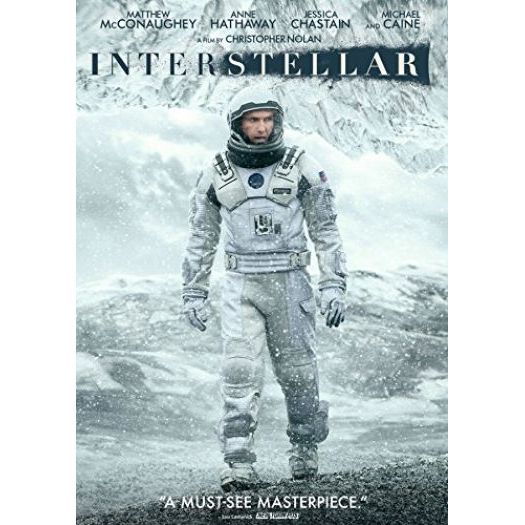
 Item is New Stock.
Item is New Stock. 
